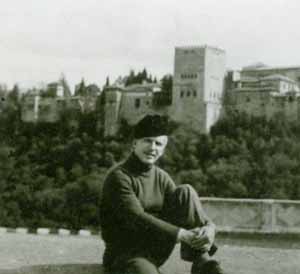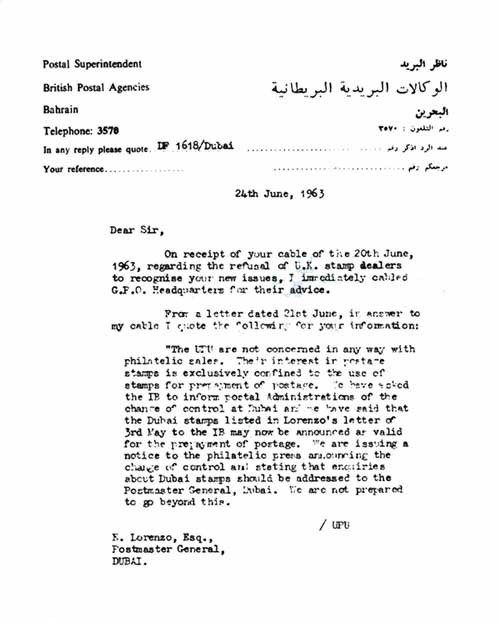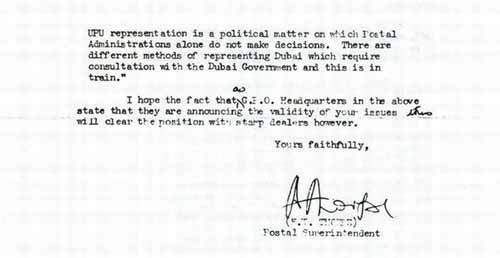

Bruce Conde, that enigmatic figure who is best known for his various escapades in the Middle East, was born in San Juan de Capistrano, California in 1914. He attended the University of California and earned degrees in Spanish and later taught in private military academies.
During WWII he served in the army in North Africa and Europe. And from 1945-48 he served in Japan, having transferred to the U.S. Air Force in 1947. His records indicate he ended his service in both the Army and the Air Force as a Major. When he left the service in 1950 he was functioning as chief of an Air Force overseas counterintelligence section. Shortly thereafter nothing was heard from him until he surfaced in Yemen in the mid 1950s and was a postal advisor to the ruler of the country.
Bruce had related to me via letters that he had been raised in an orphanage as a young child and that he had corresponded with the Imam of Yemen and asked him for some stamps for his collection. That seemed to create an invisible tie to the country that later expanded into his services to the ruler of Yemen during the period in question.
The public still does not know exactly why Bruce was in Yemen, but it has been speculated that he was functioning as an undercover agent for the U.S. Government during this period. In 1958 he gave up his U.S. citizenship, became a citizen of the country and converted to Islam. In 1959, for unknown reasons, he was expelled from Yemen. Evidently he was in a state of limbo with no citizenship in any country and no passport and spent three weeks living in the airport in Cairo, Egypt.
The ruler of Sharjah invited him to Sharjah and gave him citizenship. While there Bruce helped start the Sharjah postal services and designed several of the first sets of stamps.
Later, in the mid-1960s he was invited back to Yemen and became a major-general in the Yemeni Army led by the then deposed ruler of the country. Bruce lived in the mountains with the Imam and his followers while they battled the forces that had deposed the ruler. During this time he was the Postal Advisor to the royalist ruler and created the stamps that some catalogs list under “The Mutawakelite Kingdom of Yemen“.
Bruce loved titles and eventually called himself Major-General Abdurrahman Bruce-Alfonso de Bourbon, Prince of Conde, claiming to be a descendent of the Bourbon line. As the Yemeni situation became more pointless, he moved to Spain and eventually Morocco, marrying her Royal and Imperial Highness Olga-Beatrice, Romanov-Dalgoruky, Princess of Ukrainea-Ruthenia, Countess de Fonzzo and Dowager Duchess of Durazzo in 1984 in Tetuan, Morocco. Bruce died in 1992 in Morocco, at the age of 78.
Of great interest to many are his diaries that have not surfaced to date. It is hoped that they can shed light on much of his life and activities.
Approximately three years ago I was contacted by an English organization wanting to know what my relationship had been with Bruce. They had seen mention of him on my web site, along with the illustration of several Sharjah philatelic items. They were investigating what role Bruce might have played in the assassination of Leon Trotsky in Mexico in 1940. I have no idea what connection they thought Bruce might have had as it has long been established that it was Stalin and his agents that were responsible for Trotsky’s death.
Bruce, who designed Sharjah’s first issue, and had hoped Sharjah would be the first sheikhdom to have issued it’s own stamps after the British pull-out, was not happy that Dubai had beaten him to the punch. In a personal letter to me he left no doubt as to how he felt:
“About the Dubai “errors” and “varieties”, etc. I must warn you that they are not only artificial but shamelessly speculative. I was in Dubai on FD [First Day] and saw how the two Palestinian crooks who were manipulating everything. . . Stephan and his employee the postmaster “basement printers” who privately printed everything in Beirut without any security provisions what so ever, did as they damned well pleased, anxious to make all the trade would bear. So if you want to know what there is to know about your color fantasies I can get you Stephan’s address . . . no one else collects Dubai! Had it not been for the care and security precautions, etc. taken by Harrisons & Sons, London, our own security printers, Sharjah’s set should have been issued first, instead of a few months later. “It is not easy to find his Dubai stuff here and you probably know more about it than anyone in Beirut or Dubai as it is considered a joke here and not really collectible so that you should have a pretty clear field in collecting it for your own amusement and that of your readers. Perhaps we philatelists are too serious a lot and we need more in [a] light vein to get a smile out of us.
As Bruce had written, many “errors and varieties” were created when the stamps were finally printed. This was possible as the contract did not mandate that Dubai’s stamps be printed by a security press. The stamps were printed in Beirut, Lebanon and both Mr. Stephan and Mr. Mosden had access to the presses and the process of printing during the printing of the stamps. In one of my meetings with Mr. Mosden, he stated that at times they (he and Mr. Stephan) did some of the printing themselves. This situation of course led to the excesses that followed.
When the very lengthy set of 17 Definitives, 8 Airmails and 9 Postage Dues were printed, many “errors” were created. These “errors” and “varieties” were not sold at the Post Office, but exclusively by Mr. Stephan and Mr. Mosden, representing the Dubai Philatelic Agency . While several major stamp dealers were aware of what was transpiring, and even participated in the illegal activities, collectors were not.
In describing the creation of the first Sharjah stamps, he continued his tirade:
“Technically these stamps would have been issued in late 1962 but due to technical, construction and postal arrangement delays – as Saqr would settle for nothing but the best Trucial States postal set-up – other states got wind of the project with entrepreneurs from Beirut scrambling all over the place to get in on the act. As Dubai, the next state to the southeast of Sharjah, already held the British Trucial States main post office and postal facilities, it had a head start in that instance but had not had the long and careful planning and execution period for an initial issue. Sheikh Rashid of that state, rather unfortunately for himself, called on one of the Beirut entrepreneurs to duplicate Sharjah’s efforts. The result, ready on June 15th, nearly a month ahead of Sharjah’s planned First Day Ceremonies, was a tawdry set of some of the most unpreposing bicolored “sea life” topicals – (snails, urchins, crabs, etc.) – in dull colors, unimaginative designs and with poor Sheikh Rashid tucked away, as an afterthought, in an irregular corner plaque in the same color as the stamp margin.
“The first issue of Sharjah, unlike subsequent Trucial States fantasies, was a “clean” issue with no imperfs, souvenir sheets, artificial errors, “deluxe” or “numbered” sheets, marginal imprinted waste, or “rare varieties.” It still sells for only a few dollars and its total face was les than 3 rupees for the post and 25 for the airmail. Not so Dubai, whose nominal face ran to 56 rupees ($12.32), with so many varities and “errors” that they have not been discovered” in their totality today. The explanation is simple, the were what is called in the States a “basement printing” job instead
of products of a security press.”

If one can put aside Conde’s personal prejudices, one would have to admit that he was certainly accurate in much of his assessment of the situation. What was rather ironic was that Sharjah soon bypassed Dubai in it’s enthusiasm for issuing stamps and became one of the five sheikhdoms whose primary source of revenue was the sale of postage stamps to collectors. It is important to note that when that occurred, Conde was totally out of the picture and had nothing to do with the stamps.
Many years after Conde made such statements, we still have no idea of the “totality” of the “errors” and “varieties” he mentioned.
In view of the situation, if one only considered the 1963 – 72 postal history of Dubai, it would seem ridiculous to even consider collecting the stamps. What one must consider is that Dubai was the largest city in the Trucial States, it had a large population of merchants that depended on a postal service, it had a lengthy postal history (1909-63) prior to this period for this part of the world, it was one of only two civilian post office in the Trucial States (Muscat being the other), and with the discovery of oil in Dubai territory, commerce increased. Consequently, the philatelic history of this period needs to be documented and collected.
In it’s “The World of Stamps” column, the New York Times reported:
“Dubai, on what was once called the “Pirate Coast,” was ready with her stamps immediately after the British administration closed it’s activities at the end of business June 14. On the 15th, with His Highness, Sheikh Rashed ben Said al-Maktoum, the ruler, in attendance, new stamps were issued, and the post office was officially taken over by the Dubai Government. In addition to the ruler, others participating in the opening-day program included Edmond T. Lorenzo, Dubai’s Postmaster General: M. ST. Burton, Britain’s political agent in Dubai, and F.W. Thorpe, superintendent of the British Philatelic [sic] Agency in Bahrain. . . .Dubai is officially represented in the Universal Postal Union By the British Post Office. . ."
Evidently the newly released issues were met with skepticism in England as on June 20th, only five days after the first day ceremony, Mr. Lorenzo cabled the Postal Superintendent of the British Postsal Agencies in Bahrain, complaining that the U.K. dealers refused to recognize the new stamps. He received the following response.


A notice was sent to the philatelic press and such appeared in STAMPS in the July 20, 1963 issue under the headline “Changes in British Postal Agencies in the Persian Gulf.” The article discusses the turnover of the Qatar postal services to the Qatar Post Department and states that for the time being there is no change in the stamps in use and gives the address of the Philatelic Bureau in London where they can still be ordered. The article continues:
“THE TRUCIAL STATES – DUBAI: The British Postal Agency closed on June 14th, 1963, and control of postal services was handed over to the government of Dubai. The Trucial States range of postage stamps was withdrawn from sale in Dubai on June 14th but will continue to be valid for pre-payment of postage for a limited period. Supplies of these stamps may be obtained from the Philatelic Bureau in London (address as above). “A new range of stamps has been issued by the General Post Office, Dubai, but these are not available in London. Inquiaries should be addressed to the Postmaster General, General Post Office, Dubai, Trucial States.”
The article goes on to mention that a post office would be opening shortly in the sheikhdom of Sharjah under the control of the local ruler. No date was given and it mentions that there were no details of the stamps to be issued. The article concludes by stating “The forgoing information was supplied by the General Post Office Press and Broadcast Service, London, England.
A further notice appeared in STAMPS in November, 1963, indicating that the Trucial States set of stamps ceased to be valid for postage purposes after September 30, 1963.
The first mention of the stamps of Dubai in the magazine appeared in the June 15th, 1963 issue, the actual date of issue of the stamp. The notice had been sent to them by a man living in New York who had received it from the Dubai Philatelic Agency. Accompanying the release was a second release stating that the Dubai Government had appointed the Baroody Stamp Company in Beirut, Lebanon as it’s agent for the worldwide sale of it’s stamps. STAMPS mentions that “. . .they are a well-known company that has been in existence for many years.? After mentioning the three sets (Definitives, Airmails and Postage Dues), the article states, “We have contacted the publishers of the SCOTT catalog, who advise us the stamps will be listed”. As history has shown, this was not to be the case.
It was several months before the stamps began to appear in the ads of various dealers, but only the perforated sets were offered and were selling for between $8.35 and $8.75 for all 34 stamps (Definitives, Airmails and Postage Dues).